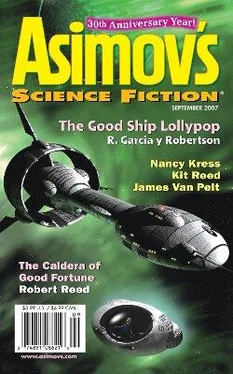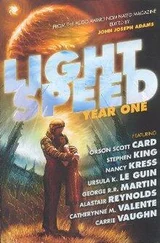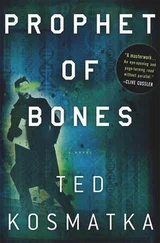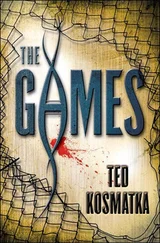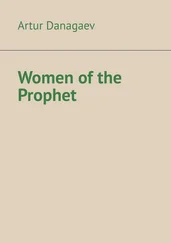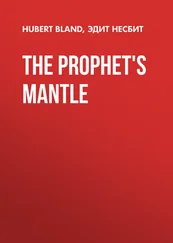Ted Kosmatka - The Prophet of Flores
Здесь есть возможность читать онлайн «Ted Kosmatka - The Prophet of Flores» весь текст электронной книги совершенно бесплатно (целиком полную версию без сокращений). В некоторых случаях можно слушать аудио, скачать через торрент в формате fb2 и присутствует краткое содержание. Год выпуска: 2007, Издательство: Asimov's Science Fiction, September 2007, Жанр: Альтернативная история, на английском языке. Описание произведения, (предисловие) а так же отзывы посетителей доступны на портале библиотеки ЛибКат.
- Название:The Prophet of Flores
- Автор:
- Издательство:Asimov's Science Fiction, September 2007
- Жанр:
- Год:2007
- ISBN:нет данных
- Рейтинг книги:5 / 5. Голосов: 1
-
Избранное:Добавить в избранное
- Отзывы:
-
Ваша оценка:
- 100
- 1
- 2
- 3
- 4
- 5
The Prophet of Flores: краткое содержание, описание и аннотация
Предлагаем к чтению аннотацию, описание, краткое содержание или предисловие (зависит от того, что написал сам автор книги «The Prophet of Flores»). Если вы не нашли необходимую информацию о книге — напишите в комментариях, мы постараемся отыскать её.
The Prophet of Flores — читать онлайн бесплатно полную книгу (весь текст) целиком
Ниже представлен текст книги, разбитый по страницам. Система сохранения места последней прочитанной страницы, позволяет с удобством читать онлайн бесплатно книгу «The Prophet of Flores», без необходимости каждый раз заново искать на чём Вы остановились. Поставьте закладку, и сможете в любой момент перейти на страницу, на которой закончили чтение.
Интервал:
Закладка:
The Prophet of Flores
by Ted Kosmatka
If this is the best of all possible worlds, what are the others like?
—VoltaireWhen Paul was a boy, he played God in the attic above his parents’ garage. That’s what his father called it, playing God, the day he found out. That’s what he called it the day he smashed it all down.
Paul built the cages out of discarded two-by-fours he’d found behind the garage, and quarter-inch mesh he bought from the local hardware store. While his father was away speaking at a scientific conference on divine cladistics, Paul began constructing his laboratory from plans he’d drawn during the last day of school.
Because he wasn’t old enough to use his father’s power tools, he had to use a handsaw to cut the wood for the cages. He used his mother’s sturdy black scissors to snip the wire mesh. He borrowed hinges from old cabinet doors, and he borrowed nails from the rusty coffee can that hung over his father’s unused workbench.
One evening his mother heard the hammering and came out to the garage. “What are you doing up there?” she asked, speaking in careful English, peering up at the rectangle of light that spilled down from the attic.
Paul stuck his head through the opening, all spiky black hair and sawdust. “I’m just playing around with some tools,” he said. Which was, in some sense, the truth. Because he couldn’t lie to his mother. Not directly.
“Which tools?” “Just a hammer and some nails.”
She stared up at him, her delicate face a broken Chinese doll—pieces of porcelain re-glued subtly out of alignment. “Be careful,” she said, and he understood she was talking both about the tools and about his father.
“I will.”
The days turned into weeks as Paul worked on the cages. Because the materials were big, he built the cages big—less cutting that way. In reality, the cages were enormous, over-engineered structures, ridiculously outsized for the animals they’d be holding. They weren’t mouse cages so much as mouse cities—huge tabletop-sized enclosures that could have housed German Shepherds. He spent most of his paper route money on the project, buying odds and ends that he needed: sheets of plexi, plastic water bottles, and small dowels of wood he used for door latches. While the other children in the neighborhood played basketball or wittedandu, Paul worked.
He bought exercise wheels and built walkways; he hung loops of yarn the mice could climb to various platforms. The mice themselves he bought from a pet store near his paper route. Most were white feeder mice used for snakes, but a couple were of the more colorful, fancy variety. And there were even a few English mice—sleek, long-bodied show mice with big tulip ears and glossy coats. He wanted a diverse population, so he was careful to buy different kinds.
While he worked on their permanent homes, he kept the mice in little aquariums stacked on a table in the middle of the room. On the day he finished the last of the big cages, he released the mice into their new habitats one by one—the first explorers on a new continent. To mark the occasion, he brought his friend John over, whose eyes grew wide when he saw what Paul had made.
“You built all this?” John asked.
“Yeah.”
“It must have taken you a long time.”
“Months.”
“My parents don’t let me have pets.”
“Neither do mine,” Paul answered. “But anyway, these aren’t pets.”
“Then what are they?”
“An experiment.”
“What kind of experiment?”
“I haven’t figured that out yet.”
Mr. Finley stood at the projector, marking a red ellipse on the clear plastic sheet. Projected on the wall, it looked like a crooked half-smile between the X and Y axis.
“This represents the number of daughter atoms. And this …” He drew the mirror image of the first ellipse. “This is the number of parent atoms.” He placed the marker on the projector and considered the rows of students. “Can anyone tell me what the point of intersection represents?”
Darren Michaels in the front row raised his hand. “It’s the element’s half-life.”
“Exactly. Johnson, in what year was radiometric dating invented?”
“1906.”
“By whom?”
“Rutherford.”
“What method did he use?”
“Uranium lead—”
“No. Wallace, can you tell us?”
“He measured helium as an intermediate decay product of uranium.”
“Good, so then who used the uranium-lead method?”
“That was Boltwood, in 1907.”
“And how were these initial results viewed?”
“With skepticism.”
“By whom?”
“By the evolutionists.”
“Good.” Mr. Finley turned to Paul. “Carlson, can you tell us what year Darwin wrote On the Origin of Species ?”
“1867, Paul said.”
“Yes, and in what year did Darwin’s theory finally lose the confidence of the larger scientific community?”
“That was 1932.” Anticipating his next question, Paul continued. “When Kohlhorster invented potassium-argon dating. The new dating method proved the earth wasn’t as old as the evolutionists thought.”
“And in what year was the theory of evolution finally debunked completely?”
“1954, when Willard F. Libby invented carbon-14 dating at the University of Chicago. He won the Nobel prize in 1960 when he used carbon dating to prove, once and for all, that the Earth was 5,800 years old.”
Paul wore a white lab coat when he entered the attic. It was one of his father’s old coats, so he had to cut the sleeves to fit his arms. Paul’s father was a doctor, the Ph.D kind. He was blond and big and successful. He’d met Paul’s mother after grad school while consulting for a Chinese research firm. They had worked on the same projects for a while, but there was never any doubt that Paul’s father was the bright light of the family. The genius, the famous man. He was also crazy.
Paul’s father liked breaking things. He broke telephones, and he broke walls, and he broke tables. He broke promises not to hit again. One time, he broke bones; the police were called by the ER physicians who did not believe the story about Paul’s mother falling down the stairs. They did not believe the weeping woman of porcelain who swore her husband had not touched her.
Paul’s father was a force of nature, a cataclysm; as unpredictable as a comet strike or a volcanic eruption. The attic was a good place to hide, and Paul threw himself into his hobby.
Paul studied his mice as though they were Goodall’s chimps. He documented their social interactions in a green spiral notebook. He found that, within the large habitats, they formed packs like wolves, with a dominant male and a dominant female—a structured social hierarchy involving mating privileges, territory, and almost-ritualized displays of submission by males of lower rank. The dominant male bred most of the females, and mice, Timothy learned, could kill each other.
Nature abhors a vacuum, and the mouse populations expanded to fill the new worlds he’d created for them. The babies were born pink and blind, but as their fur came in, Paul began documenting colors in his notebook. There were fawns, blacks, and grays. Occasional agoutis. There were Irish spotted, and banded, and broken marked. In later generations, colors appeared that he hadn’t purchased, and he knew enough about genetics to realize these were recessive genes cropping up.
Paul was fascinated by the concept of genes, the stable elements through which God provided for the transfer of heritable characteristics from one generation to the next. In school they called it divine transmission.
Читать дальшеИнтервал:
Закладка:
Похожие книги на «The Prophet of Flores»
Представляем Вашему вниманию похожие книги на «The Prophet of Flores» списком для выбора. Мы отобрали схожую по названию и смыслу литературу в надежде предоставить читателям больше вариантов отыскать новые, интересные, ещё непрочитанные произведения.
Обсуждение, отзывы о книге «The Prophet of Flores» и просто собственные мнения читателей. Оставьте ваши комментарии, напишите, что Вы думаете о произведении, его смысле или главных героях. Укажите что конкретно понравилось, а что нет, и почему Вы так считаете.
